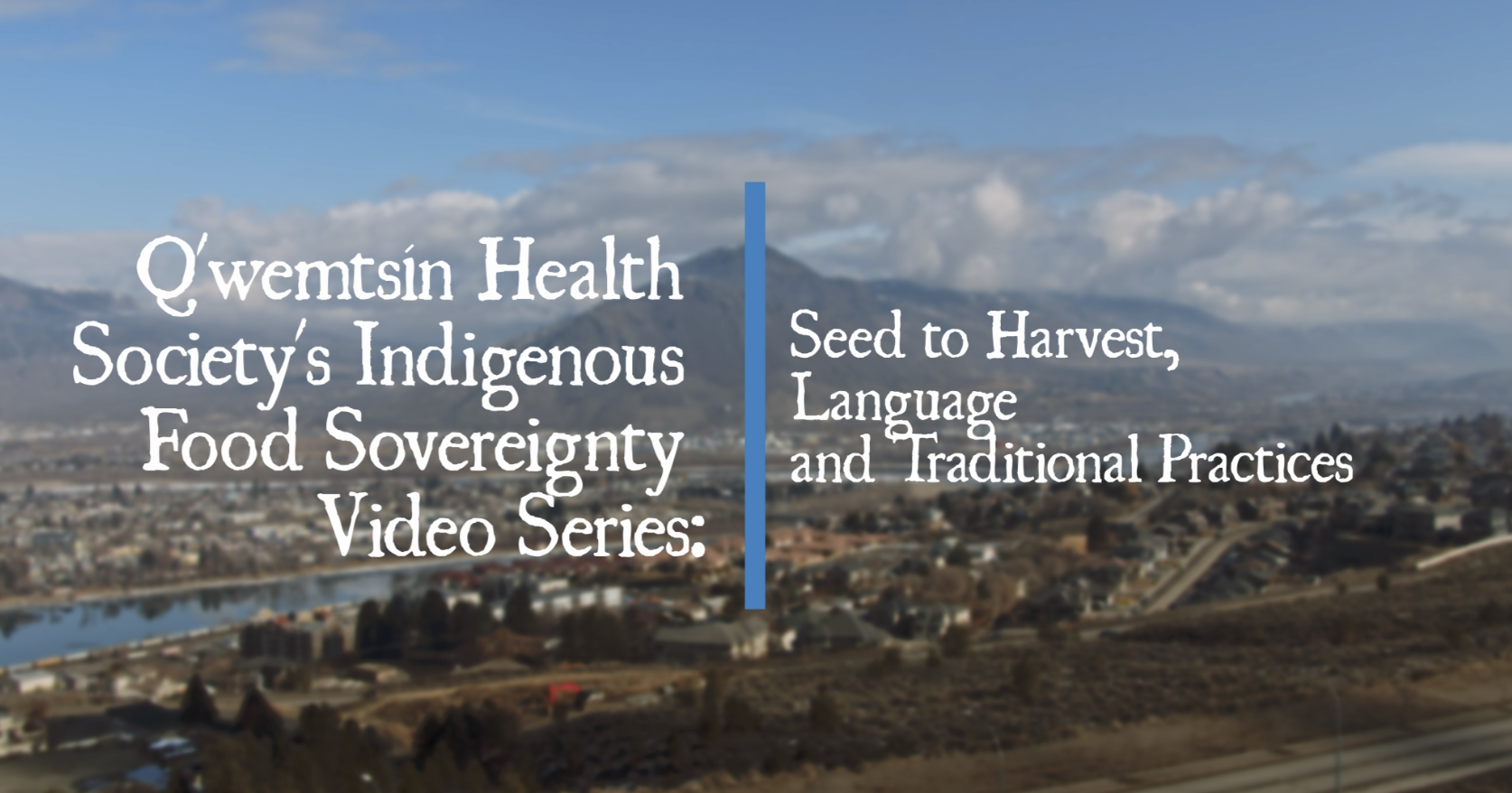Seed to Harvest, Language and Traditional Practices
In collaboration with three communities; Skeetchestn Indian Band, Tk’emlúps te Secwépemc and Whispering Pines/Clinton Indian Band, the Q’wemtsín Health Society (QHS) has created a series of videos to promote growing and sharing food in their communities. Working with students, teachers, Elders, and knowledge keepers, each video teaches skills about foodways to encourage knowledge sharing and healing.
These videos promote healthy local food in school and were made for students, teachers, and the whole community. The videos provide information on different aspects of gardening and teachings of the Secwepemctsín language. With a total of 9 videos, a variety of topics are covered in the series. One video in the series teaches about harvesting a moose.
We’re pleased to share these videos from the series:
Please note: the videos are available only in English at this time.
Introduction video: Elkstwécw ne tmicw – Working Together On The Land (5.11 mins)
This video provides an introduction to the topics in the series of videos. Topics will include the focus on youth, transplanting, germinating, harvesting, companion planting, harvesting of a moose and teaching the Secwepemctsín language.
QHS Gardening Video 1 – Starting Seeds (15.30 mins)
With the help of students and staff, this video shares information on germinating, seed starter mix, reading a growth chart, and more.
QHS Gardening Video 2 – Preparing the Garden (5:17 mins)
The students and teacher present what they have learned about water bottle planters, transplanting, direct sowing, and more.
QHS Gardening Video 3 – Transplanting & Garden Tips (11:07 mins)
Staff help students learn about sunlight-based organization, transplanting, attracting pollinators & avoiding pests, transplanting potato halves and more.
QHS Gardening Video 4 – Companion Planting and the Three Sisters (10:53)
The students learn which plants can be planted together and how companion planting can help attract the right pollinators and promote plant growth in the garden.
QHS Gardening Video 5- Composting (22:33)
The Food Sovereignty Researcher at QHS introduces various methods of creating a composting pile and the pros and cons of each. Some of the ones she highlights are the three bin methods, hot composting, and cold composting
QHS Gardening Video 6 – Caring for the Garden (13:29)
The video illustrates how to identify and address pests in the garden to maintain a healthy garden.
QHS Gardening Video 7 – Harvesting (5:34)
The staff help identify when greens are ready to harvest, and share how leaving a little bit of foliage can help the plants to recover.
Bonus video: Pexṕixem ne Secwepemcúl̓ecw – Hunting in Secwepemcúl̓ecw
While making the garden videos above, feedback from the community indicated interest and enthusiasm for creating an additional video featuring time spent at a hunting camp, too. In this video, Elders and other community members share their knowledge with youth who get to experience the hunting camp first hand and learn important cultural skills like how to hunt, process and be self-sustaining.
We hope you enjoy these videos as much as we do!
Please share the videos with your network!
In 2019 QHS received a Farm to Cafeteria Canada Learning Circle grant which ignited a spark for developing a local Indigenous Food Sovereignty plan for the communities. Learn more about their learning circle here.
The Skeetchestn Community School and Sk’elep School of Excellence are also recipients of Farm to School Canada Grants (2020) and their students are featured in this video series, which is part of the growing momentum to realize the community’s Indigenous Food Sovereignty plan.
Kukwstsétsem.
We are grateful for the opportunity to work with QHS and the communities, and to host these resources.





